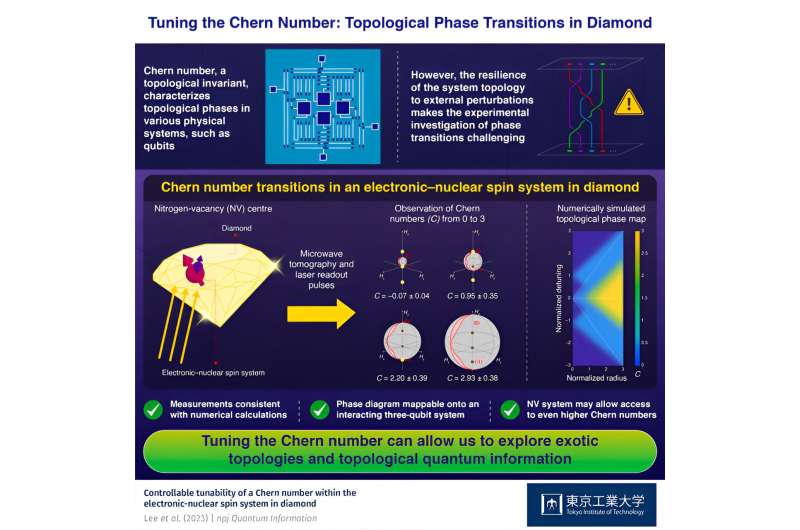Company tel:+86-379-63184520
Contact number:+86-15937921751
Postcode:471000
Email:info@yuxindiamond.com
Address:3-1-508 Luoyang National University Science Park, No. 2 Penglai Road, Jianxi District, Luoyang, China 471000
Tuning the Chern number in the nitrogen-vacancy center in diamond

by Tokyo Institute of Technology
The Chern number, an invariant quantity that characterizes topological phases in physical systems, was recently tuned in a controlled fashion by researchers from Tokyo Tech. They achieved this feat in an electronic-nuclear spin system, namely the nitrogen-vacancy center in diamond, observing Chern numbers from zero to three. This work opens doors to exploring exotic topology and its applications in topological quantum information.
The Chern number is a non-changing property (or an "invariant") that characterizes unique states called "topological phases" in various physical systems. Put simply, Chern numbers provide insights into the behavior of electrons and their collective properties inside the material.
Scientists try to investigate transitions between different topological phases by tuning the Chern number to shed further light on the properties of matter. However, the robustness of the system topology to external disturbances makes it experimentally challenging. Despite an established theoretical groundwork, higher Chern numbers have rarely been observed experimentally in condensed matter systems. Nevertheless, recent advancements in materials science and experimental techniques have opened up new possibilities.
Recently, an international team of researchers, including Professor Walsworth from the Department of Physics at University of Maryland in the U.S. and Associate Professor Keigo Arai from the Department of Electrical and Electronic Engineering at Tokyo Institute of Technology (Tokyo Tech) in Japan, has explored the transitions of the Chern number in an electronic-nuclear spin system associated with the nitrogen-vacancy (NV) center in diamond. Their work is published in the npj Quantum Information journal.
"The NV center, a defect in the diamond lattice, consists of a nitrogen atom coupled with a vacant lattice site. This system provides a unique platform for investigating topological phases owing to its controllable electronic and nuclear spin degrees of freedom," explains Dr. Arai.
The researchers varied the parameters of a control Hamiltonian (a function used to solve a problem of optimal control for a dynamical system) through spin-control microwaves to manipulate the Chern number, which represented the number of degeneracies enclosed in a control Hamiltonian parameter sphere. Consequently, transitions between different topological phases could be induced by adjusting the radius and offset of this sphere.
The team next employed a combination of experimental techniques and numerical simulations to characterize the system's resulting behavior, observing Chern numbers from zero to three. Additionally, the measured topological phase diagram was in agreement with the numerical simulations and could be mapped onto an interacting three-qubit system. Finally, the researchers demonstrated that the NV system could enable access to even higher Chern numbers, paving the way for exploring more complex topological phases.
The novelty of this work, however, lies not only in observing the transitions of the Chern number but also in demonstrating its controllability. The ability to tune the Chern number within a single system opens up avenues for practical applications. "For instance, high Chern number phases in quantum anomalous Hall insulators hold promise for low-power-consumption electronics. As the Chern number increases, the contact resistance between normal metal electrodes and chiral edge channels decreases, making it an attractive platform for future electronics," points out Dr. Arai.
Indeed, the tunability of the Chern number within the NV center system offers exciting possibilities for exploring exotic topologies and their applications in topological quantum information. This could potentially advance the fields of quantum metrology, next-generation electronics, spintronics, and quantum computation.







